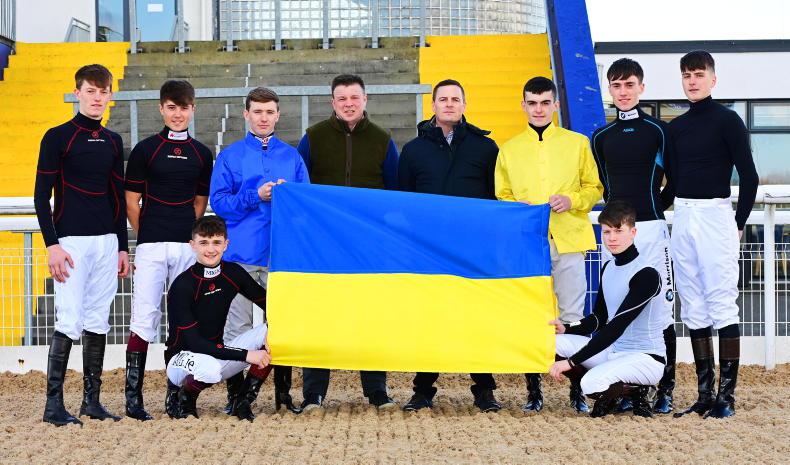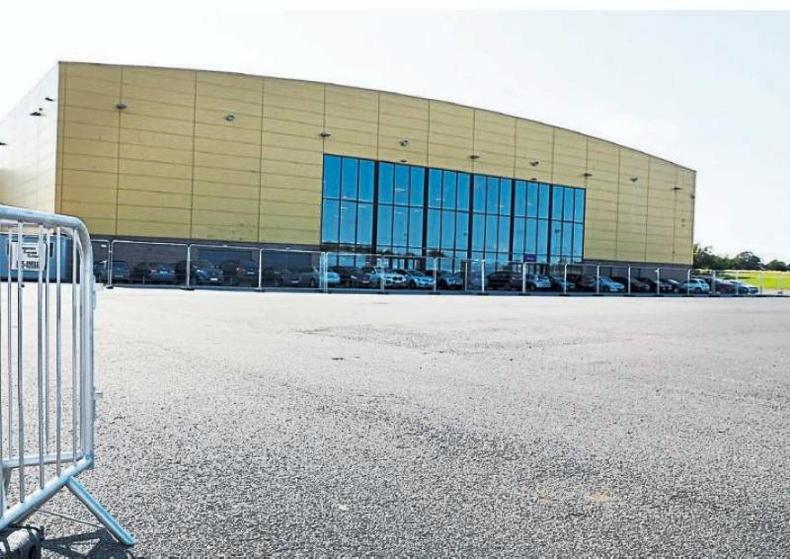IRELAND’S racing and bloodstock community is supporting the sizable number of Ukrainians working with horses in Ireland, whose lives and families are affected by the war in Ukraine.
Ukrainians are employed by some of the top trainers and breeding operations in the country, including Coolmore Stud, Jim Bolger, Tally-Ho Stud, Ballyhane Stud and the Castlebridge Consignment.
Ballyhane’s stallion man Mykola Varola left Ireland last weekend to defend his country. Joe Foley reported: “Mykola has been with me for 15 years. He has family in Ukraine and was very upset over the invasion. He came to me and said he was very keen to go back and fight. He and other Ukrainians boarded a flight to Poland last Sunday and they are making their way to the border from there.”
Sergiy Kistochkin is one of three Ukrainians working at Coolmore Stud. “I have been here for 21 years and I think there are hundreds of Ukrainians working with horses in Ireland. Right now I am loading a van with clothes and medical supplies for Ukraine. People here have been very generous.”
Optimism
On the outlook for Ukraine, he said: “I am optimistic. If Kyiv falls then anything could happen. There is a lot of European goodwill but they won’t agree to close the skies over Ukraine. That would stop Russian bomber planes from attacking us.”
Stas Datskiv is a key member of Bill Dwan’s Castlebridge Consignment agency, and worked for Ger Lyons in the past.
Dwan said: “Stas has several family members in Ukraine and our thoughts and prayers are for their safety and in particular his daughter, still currently in the besieged capital of Kyiv.”
Jim Bolger employs two Ukrainians and the yard made a collection this week for the Red Cross. The trainer said: “There was some talk of sending a horsebox with supplies but our information is that, for now, the most efficient way to help is to give money to the Red Cross.”
Three Ukrainians are part of the team at Tally-Ho Stud. Roger O’Callaghan said: “They are here 15 years and two of them would be well-known on the sales circuit. One is from eastern Ukraine. Russian tanks went past his mother’s house and she is still there. The other two are from the west which hasn’t been affected yet.”
Ukraine has one thoroughbred racecourse, located in Odessa on the southern coast.
Aleksandr Malynovskyy of the Ukraine Jockey Club told The Irish Field there are 260 thoroughbred mares in the country and one of the most popular stallions standing there is Alandi, a Group 1 winner for John Oxx. The breeding season is continuing.
“We have approximately 10 to 12 trainers. They are employed by stud farms who also have their own jockeys. The racing season at Odessa is from May to October and there are about 50 meetings per year.
“The main thing is that all the horses in Ukraine are safe and they have access to feed and water. We are sure we will win this war!”
In more immediate danger are the 350 horses based at the trotting track in Kyiv. A nearby riding school has asked the hippodrome to take in a further 70 horses. They have room for 70 more but no bedding, fodder and there are not enough people to look after the horses already there.
The Irish Field’s harness racing correspondent Dan Carlin reports: “The track is located eight miles from Freedom Square. My contact in Ukraine tells me only the brave remain at the hippodrome, though the feed situation is worse for stables outside the city.”
THE price of horse feed could rise significantly due to the war in Ukraine.
Both Russia and Ukraine are key players in global grain trade, so any disruption in production and freight into or out of the Black Sea could have consequences on ingredient availability.
Russia accounts for roughly 20% of global wheat exports and Ukraine 8%, plus 13% of corn exports. Combined, they account for 60% of sunflower production and are key sunflower oil exporters.
An animal feeds expert told The Irish Field: “This is a very big concern. Ireland does not grow enough cereals so we have to import. If we can’t get wheat, what will replace it? The price of maize has gone from €230 per tonne a year ago to €350 now. Soya has almost doubled in price. These are two big sources of protein used in animal feed.
Knock-on
“There will be huge knock-on effects for us from the conflict in Ukraine, which we can only speculate about at the moment. As companies and countries cease trading with Russia, demand for alternative supplies will shoot up.
“South America is an alternative source but we’re hearing that the harvest there has been poorer than expected due to weather conditions. This will drive prices higher still and we are already in a runaway inflationary scenario.”




 This is a subscriber-only article
This is a subscriber-only article
 It looks like you're browsing in private mode
It looks like you're browsing in private mode










SHARING OPTIONS: